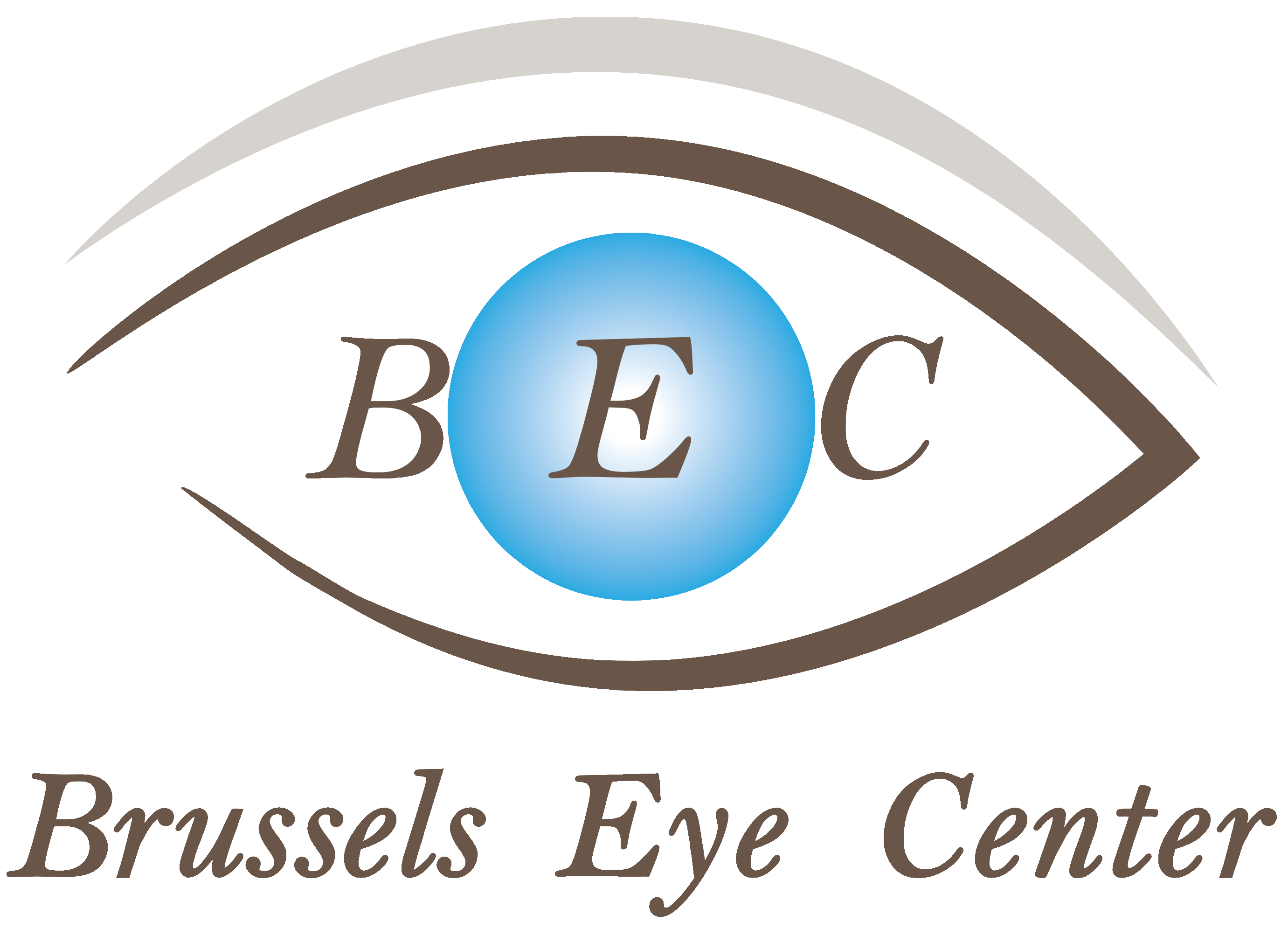Evolutive corneal disease inducing astigmatism, irregular astigmatism and sometimes myopia and reducing the best-corrected visual acuity. It occurs usually around 20 years old.
SEMI-RIGID, GAS PERMEABLE CONTACT LENSES:
These are contact lenses correcting corneal astigmatism and in some cases, irregular astigmatism. Some lenses are especially designed for keratoconus.
CORNEAL CROSS-LINKING :
It’s a technique used to freeze the cornea suffering from keratoconus. The principle is applying ultra-violets rays with riboflavin, to induce photo polymerisation of collagen.
Treatment begins by mechanical desepithelialisation or by laser Excimer. Riboflavin is instilled during 15 to 30 minutes. Then, ultra-violets are applied during 30 minutes.
Corneal cross-linking is performed under topical anaesthesia by drops. Pain can occur during the first 24 to 48 hours.
In some cases, Corneal Cross-Linking is combined with PRK or PTK by laser Excimer at the end of surgery.

INTRA-OCULAR RINGS :
It’s a technique used to freeze the cornea suffering from keratoconus. The principle is applying ultra-violets rays with riboflavin, to induce photo polymerisation of collagen. Treatment begins by mechanical desepithelialisation or by laser Excimer. Riboflavin is instilled during 15 to 30 minutes. Then, ultra-violets are applied during 30 minutes.
Corneal cross-linking is performed under topical anaesthesia by drops. Pain can occur during the first 24 to 48 hours.
In some cases, Corneal Cross-Linking is combined with PRK or PTK by laser Excimer at the end of surgery.
INTRA-CORNEAL RINGS (KERARING)
These are PMMA ring introduced in the steepist part of the cornea to reduce irregular astigmatism. One or two rings are necessary depending on each case.
This surgical technique flattens the cornea and induces better visual acuity and better tolerance to contact lenses. This ambulatory surgery is performed by topical anesthesia with drops.

Intracorneal ring KERARING

KERARING before – after
More info : www.mediphacos.com
PHAKIC INTRA-OCULAR LENS
Phakic intra-ocular lenses like ARTISAN, ARTIFLEX, VISIAN ICL and TORIC VISIAN ICL are possible after stabilization of keratoconus by Corneal cross-linking with or without Intra Corneal Rings to treat myopia and residual astigmatism.
CORNEAL GRAFT or PENETRATING KERATOPLASTY (PKP):
It’s the last solution for keratoconus in case of no-stabilization and failure of other techniques like rigid contact lenses, cross-linking or intra-ocular lenses and intra-corneal rings.
The purpose of corneal graft is to exchange the abnormal cornea by the cornea of a donor. It can be penetrating deep or lamellar graft on a part of the center cornea.
Deep lamellar or penetrating keratoplasty need sutures on the cornea at the end of the surgery. Sutures can be removed only after one year. Residual myopia and astigmatism after the removal of the sutures can be treated by Lasik and if they are very high, by Phakic intra-ocular lenses: ARTISAN, ARTIFLEX, or TORIC ICL.
